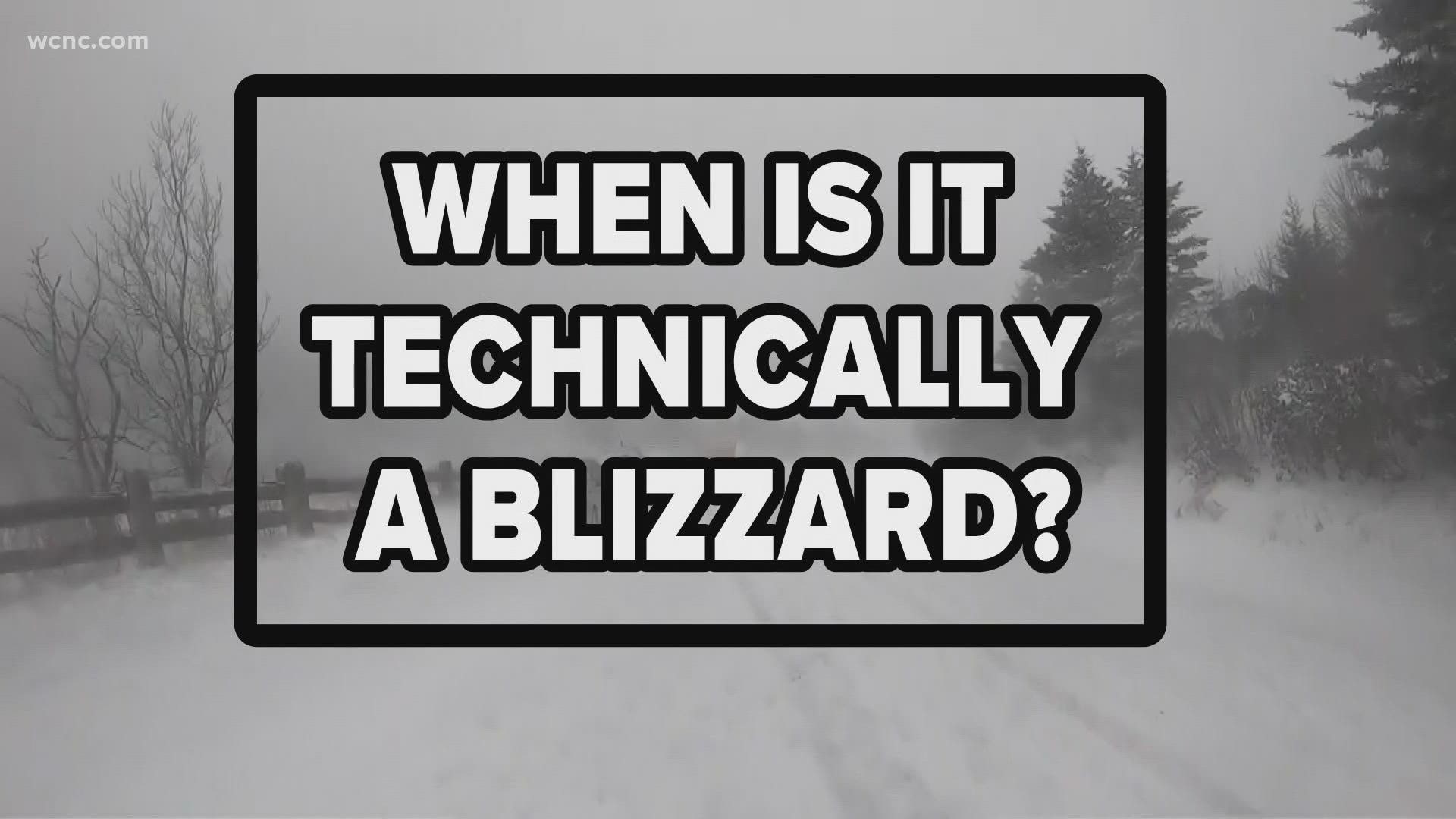CHARLOTTE, N.C. — Living in the Carolinas, the term blizzard is one that rarely comes from the First Warn Storm Team, but they have happened before.
And yes, a blizzard is much more than a simple winter storm that brings snow. Here's what separates a blizzard from your typical winter storm.
What is a blizzard?
Whiteout conditions from blowing snow where you can barely see in front of you are part of it, but it's the wind that truly classifies a blizzard.
For the National Weather Service to issue a Blizzard Warning, three boxes must be checked.
- Sustained winds or frequent gusts must be 35 mph or greater
- Falling or blowing snow is reducing the visibility to a quarter-mile or less
- These conditions will last three or more hours
However, it does not need to be snowing for there to be a blizzard. Blizzard conditions can even happen under clear skies. This is known as a ground blizzard.
This happens after fresh snow that hasn’t had the time to settle. The longer snow sits, the more it compacts and can become icy from melting and refreezing. This makes it tougher to move.
Blizzard Warnings Across the United States
In the U.S., blizzards are most common in the Plains states and in the Midwest. Blizzards aren't common in the Charlotte area.
In fact, the Greensville-Spartanburg National Weather Center office last issued a Blizzard Warning in February 2010. That's over 4,300 days ago as of this January. NOTE: Even though Blizzard Warnings haven't been issued in years, mountaintops can still experience blizzard conditions during winter.
The most historic blizzard in Carolina history happened in March of 1993. This historic superstorm caused billions of dollars in damage up and down the coast. The North Carolina mountains saw 2-3 feet of snow and wind gusts were clocked up to 110 mph in Boone.
Where the Term Came From
Lastly, the first mention of the word blizzard as a snowstorm appeared in an Iowa newspaper back in 1870 and the term became nationally known over the next couple of decades.
Contact Chris Mulcahy at cmulcahy@wcnc.com and follow him on Facebook, Twitter and Instagram.

